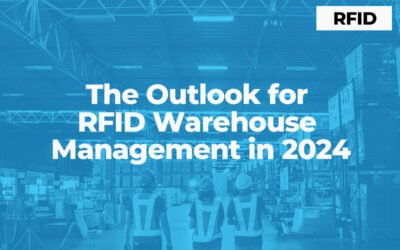Your assets are the lifeblood of your company, the most valuable items your organization owns. Asset lifecycle management helps you control where your assets are, maintain their value, and manage them well so that you can continue making profits and scaling your business.

Understanding how your assets keep your company afloat is important. All it takes is one asset to be lost, stolen, or even expire, for your business to be financially impacted from top to bottom. Asset lifecycle management helps you control where your assets are, how much they are worth, and how to manage them so that you continue making a profit and growing your business.
To understand how asset lifecycle management works, we will start with the basics.
What is an Asset Lifecycle?
The asset lifecycle is the management of your asset from the moment its need is identified up until its final disposal. The two major ways this tracking can be done is either by hand (manual) or using software designed specifically for asset management (automated).
Within an asset’s lifecycle, it is important to include all factors surrounding your asset such as the cost to replace the asset, how reliable the asset is, and if it is crucial to the overall success of your business. To ensure that an asset is cost effective, you should also consider tracking any maintenance that may be required. Breakdowns of an asset can cause delays and even emergencies that could have been avoided.
Keep in mind that every asset within your company could require a different lifecycle process. Some assets have longer lifespans than others. Some assets do not require as much maintenance. Some assets have a shelf life. The stages of asset lifecycle management will be the same for every asset, but how each asset is processed will be different.
What is Asset Lifecycle Management?
Asset lifecycle management is the actual process a company uses to manage the lifecycle of their assets across the business. These assets can be tangible or intangible. They can include personnel, buildings, software and hardware, inventory, monetary assets, and anything that is vital to the day-to-day running of the business. How these assets are managed differ from company to company.
In order for a system to be effective, the company has to have control over ALL aspects of their business assets. It doesn’t matter if the company is big or small. In order to stay in control, an accurate and real-time asset tracking system needs to be in place. Otherwise, you risk losing time and money.
Asset lifecycle management also extends the usability of the asset as far as possible without losing any of the functionality associated with the asset. This is done through proper planning which includes assessing the asset, collecting data, creating a plan for managing the asset, testing the plan and integrating that plan.
Why is Asset Management Necessary?
Imagine having to control your asset lifecycle management by hand for every laptop or computer in your company. Or even every piece of inventory in your warehouse. Assets will fall through the cracks. This is why a good process should be integrated across your business.
Good asset lifecycle management software can help you do this more efficiently. It can help you by:
- Allowing you to track and monitor every asset in your company in one central location
- Letting you manage your assets from any location, especially if the package has a mobile component
- Identifying and managing any risk to your assets so that you can minimize them immediately
- Providing information on an asset’s lifecycle
- Helping identify ghost assets that can be removed from the system
- Planning maintenance schedules for each asset so that there are no disruptions of service
- Giving you accurate, in-depth reports and audits that do not take hours to compile
- Freeing up resources that assets needing a lot of attention are currently using
- Allowing you to focus on the reliability of current resources
- Boasting your assets productivity
You can read more about asset management here.
9 Stages of Asset Lifecycle Management
There are nine stages of the asset management cycle. Here we will look at each one.
- Audit your current asset lifecycle process. Identify common pitfalls in the process so they can be fixed. Speak with your staff to find out what they have to say about the assets your company owns and the current infrastructure that you have in place. This will help you streamline any out-of-date steps.
- Identify opportunities to improve your processes based on your audit. You will have plenty of data to work with to support the improvement and integrate them into your business’ asset lifecycle process.
- Check current company policies to make sure they are not outdated, hampering growth or conflicting with the implementation of your asset lifecycle management. If they are, suggest and implement improvements so that your assets are protected, maintained and managed properly.
- Identify new assets that can be added to your business based on the needs of your company. Make sure the asset is properly set up in the management system so that there are no hiccups in the future that make the asset useless. Look at why the asset is needed based on data and forecasts that have been analyzed. Once you are sure the asset is right for you, move to the next stage.
- Procure the asset and integrate it into your asset lifecycle management process. The asset is now ready to be used as part of your inventory for sales, or as an item that is used by the company and its employees.
- Deploy the asset so that it is ready to be used. Inspect it for defects, check to see if it has been installed properly (if required) and provide the asset with the proper tracking system, such as tags or barcodes.
- Utilize the asset. If it is a piece of equipment, you can start using it right away. This is the longest stage of the lifecycle.
- Maintain your asset so that it continues to be utilized properly. Proactive, preventative maintenance can be scheduled as part of the asset management cycle.
- Renew or dispose of the asset when it has reached the final stage of its lifecycle. By this point, you will have collected enough data to know how to proceed with the asset. If the asset is to be disposed of, do so in the proper manner.
Why Use an Asset Management Software Solution?
Why should your company use an asset lifecycle management system? You should use it to:
- See a faster return on your asset investment
- Provide measurable improvement to your operating efficiency to stakeholders
- Lower your costs by analyzing what assets are good and what assets are bad
- Reduce the administrative burden of producing complex reports
- Provide a higher level of compliance
- Manage your risk better
At Apptricity, we know asset management.
Apptricity’s Enterprise Asset Management Software application gives you a single, unified view of your Asset, and Inventory Management procedures. It also provides you with a cloud-based system, along with mobile applications, that feature IoT integrations. This means it provides real-time updates of end-to-end asset management process. Plus, each application can be used separately, or in conjunction with the others to scale with your needs.
Let us help you with your asset lifecycle management needs. Contact us today for a demo.


